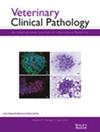Comparative Testing of In-Clinic, Point-of-Care Hematology Analyzers With a Commercial Laboratory Reference Analyzer
Abstract
Background
Previous studies have shown that veterinary in-clinic hematology analyzers may have analytical errors, but few studies have been found that attempt bias correction and look at the effect of this on the achievement of several quality goals and evaluation of analytical performance specifications.
Objectives
To design a comparative testing program for use by in-clinic laboratories with a variety of point-of-care (POC) analyzers and to evaluate the performance of in-clinic hematology analyzers compared to a reference analyzer. To determine whether the removal of bias from the in-clinic result can be used in preparation for the harmonization of the results with those of the reference laboratory. To determine the analytical performance specifications/quality goals that can be achieved with the removal of bias from the in-clinic results. To determine whether clinic-based clinicians and technicians found the information provided valuable for ongoing in-clinic hematology quality management.
Methods
Fresh EDTA whole blood canine samples with results that were within reference limits were processed five times by in-clinic staff using their in-clinic analyzer before sending the sample to the reference laboratory for comparison. Results were assessed using quality goals, including total allowable error (TEa) or expert opinion and sigma metrics. The quality goal index (QGI) was calculated for measurands whose performance was < 4 sigma. The potential impact of any difference in results on clinical interpretation was also reviewed.
Results
In comparison to the reference analyzer, in-clinic hematology analyzers often had analytical error and failed to meet quality goals for TEa and sigma metrics. This error was often undetected by the in-clinic laboratory. Sigma metric < 4 was a useful performance indicator of poor performance, and only 54% of measurands had sigma metrics > 4. Of these poor-performing instances, 90% were attributed to bias. Performance improved for in-clinic analyzers by adjusting results to correct for bias in preparation for harmonization.
Conclusion
A comparative testing program was successfully designed and implemented to evaluate performance and harmonize in-clinic hematology analyzers to a reference analyzer using samples that are within reference intervals.

 求助内容:
求助内容: 应助结果提醒方式:
应助结果提醒方式:


